
Multiple Maydays from Atlantic Storm
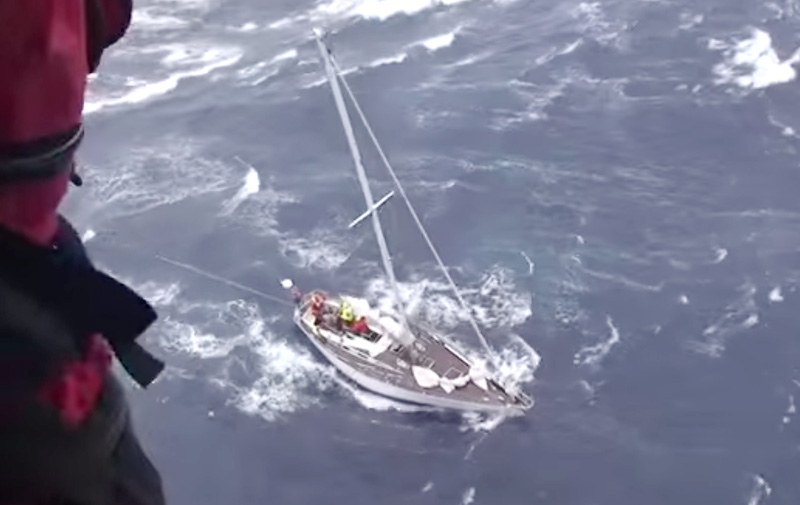
Having crossed the Atlantic himself aboard a 30-ft Beneteau, ex-San Francisco sailor Jean Vaury brought to our attention reports on an abnormally violent storm 500 miles south of the Azores late last Wednesday night, with conditions so severe — 50-knot winds and seas up to 45 feet high — that at least four private yachts called for rescue. The response involved rescue agencies from several nations, including a US Coast Guard helicopter that was conducting exercises in the area, and at least six commercial vessels.
According to the news site Fleetmon.com and other sources, two crew off the American yacht Manca were rescued by the Greek-flagged, 718-ft tanker Archangelos Gabriel. A Portuguese Air Force helicopter rescued four crew from the Norwegian-flagged Swan 44 Kolibri, which had reportedly suffered a capsize plus two knockdowns that left her without use of her engine or communications gear. Two crew of the Dutch-flagged yacht Gandul were rescued by the Cafer Dede, a 551-ft container ship with Marshall Islands registry.
This video shows the rescue of Kolibri’s Norwegian crew by a Portuguese helicopter crew.
(Courtesy Portuguese Air Force.)
In addition, the nearly new French Lagoon 400 S2 yacht Reves Do, with a family of four aboard, reportedly caught fire, capsized and sank. The mother, Sophie, 37, and her nine-year-old son Hugo managed to get into the life raft and were eventually rescued by the 958-ft Hong Kong-flagged bulk carrier Yuan Fu Star. Sometime in the morning the father, Claude, 39, and his six-year-old daughter were spotted floating in the water. They’d been floating in their lifejackets for seven hours. A survival kit was dropped down to them, and they were eventually rescued by the 318-ft hospital ship Esperanza del Mar, out of the Canary Islands. But, tragically, the daughter died shortly thereafter.
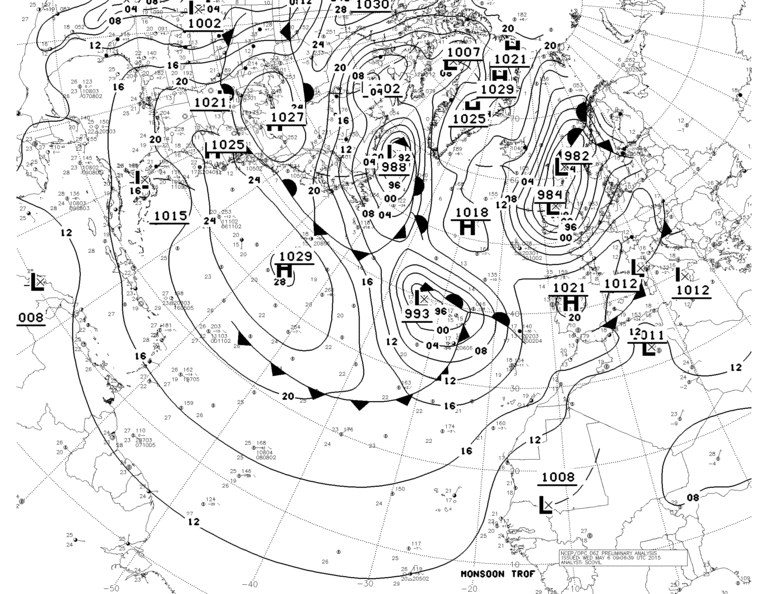
Rescue operations over a 34-hour period were coordinated by MRCC Ponta Delgada on São Miguel Island, the largest isle in the Azores.
It’s Galway for Wind, Cold and Damp
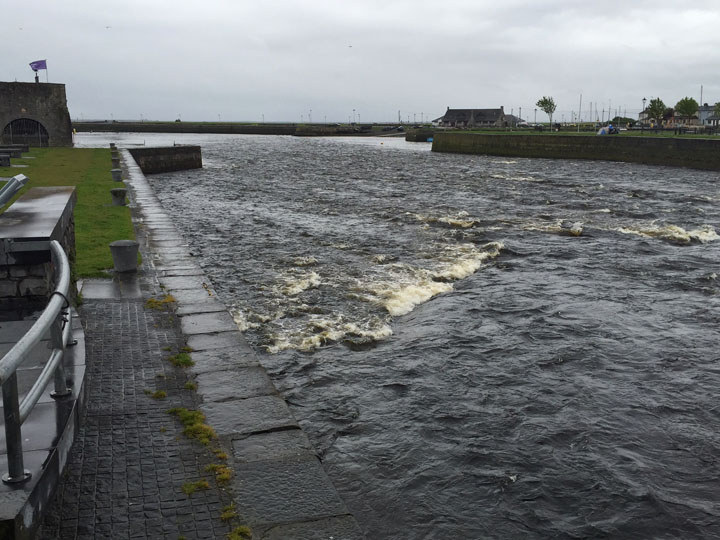
©2015Latitude 38 Media, LLC
If you think it can be breezy, cold and damp on San Francisco Bay, it sometimes can be. But there is San Francisco Bay breezy, cold and damp, which is a sometimes thing, and then there’s Galway, Ireland, breezy, cold and damp, which are extremes of each of those conditions, and they are the norm rather than the exception. No wonder the residents drink so much.
Galway is on the west coast of Ireland almost exactly halfway between the north and the south. It lies on the River Corrib that quickly flows into Galway Bay. Unlike California rivers, the Corrib flows hard and fast because in Ireland it’s always either raining or about to rain. When the Wanderer was in Galway the other day, there was so much water flowing into the bay that the water level in the middle of the Corrib was at least a foot higher in the center than along the shore. Fall into the Corrb and it won’t be long before you’re in the middle of the Atlantic Ocean.
Despite the difficult weather conditions, Galway is home to a number of sailboats and sailors. A rugged lot.
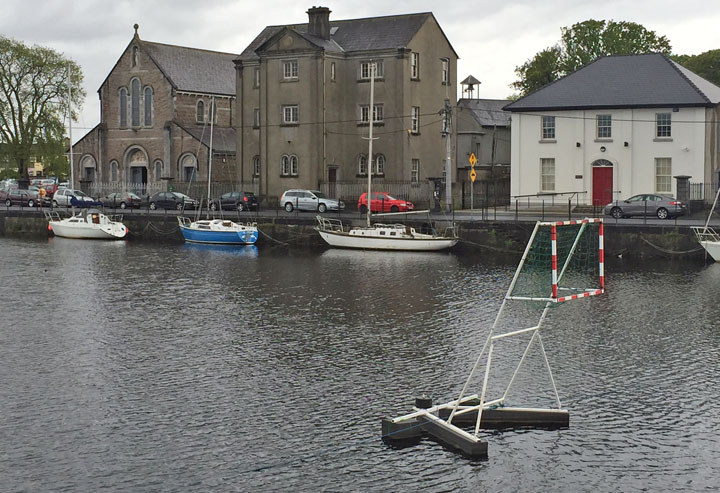
©2015Latitude 38 Media, LLC
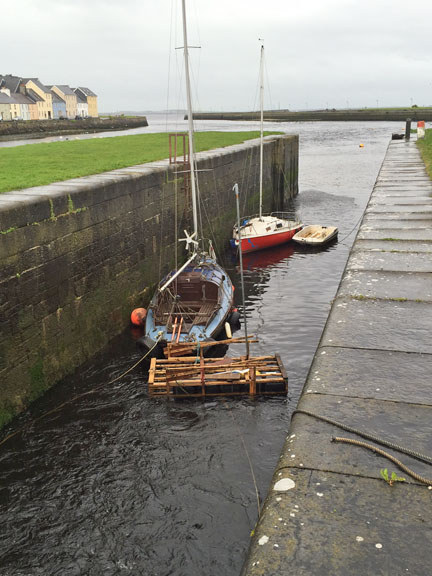
©2015Latitude 38 Media, LLC
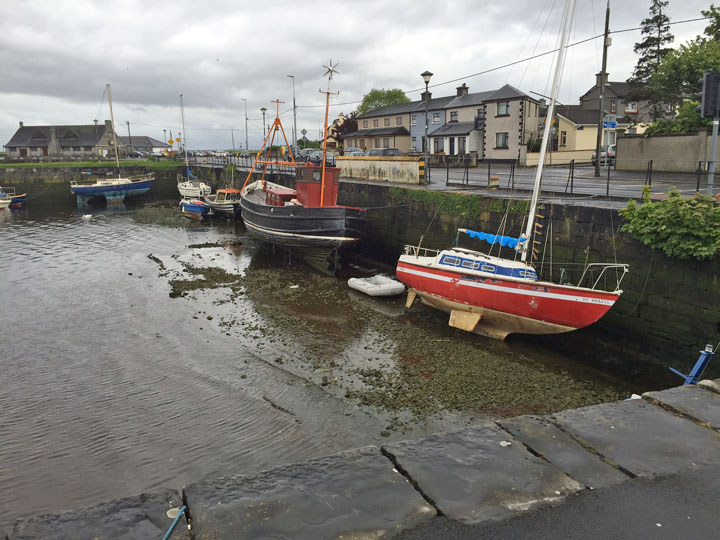
©2015Latitude 38 Media, LLC
Galway’s nickname is ‘the City of Tribes’ because in the Middle Ages it was ruled by an oligarchy of 14 merchant families, most of whom, thanks to brave and hardy sailors, traded with France and Spain. In fact, Galway was Ireland’s principal port for international trade in the Middle Ages, despite being about the most distant port from the continent. Chris Columbus was a visitor.
In those days Galway was populated by Hiberno-Normans, who forbade the Irish unrestricted access to the walled city. “Neither O’ nor Mac shall strutte nor swagger through the streets of Galway without permission,” was the rule of the day. That’s ironic, because Galway, the fourth biggest metro area of Ireland, is now considered to be the most Irish town in all of Ireland. Galway is home to three universities, major festivals of all stripes, and countless pubs.
By chance we stopped in at the King’s Head pub on one of Galway’s charming narrow streets, which are lined with shops and populated with singers hoping to be discovered as the next Bono. We had a fish soup and Galway mussels, both of which were not only reasonably priced but absolutely delicious. The pub’s name came from the fact that back in the day its owner beheaded King Charles I.
©2015Latitude 38 Media, LLC
If you want wild sailing, lots of pubs, and a colorful history, sign up for Galway. But don’t forget to pack the foulies.
